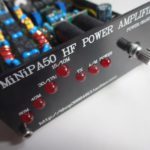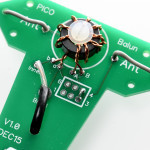- Go to the http://www.sota.org.uk/ website and read through each of the tabbed sections from “Home” to the “About SOTA” in order to get the “big picture” of SOTA and the organizational structure of the program.
- Open a http://www.sotadata.org.uk account. Click on the “Logon/Logoff” tab to register. Secondly, open a http://www.sotawatch.org account. These two accounts will give you access to valuable SOTA websites necessary for the following activities.
- The first effort is to read the ARM (Association Reference Manual) for your Association which can be a State or a FCC Call Area (W1, W2, etc). You can download a copy at: http://www.sota.org.uk/Associations. Scroll down to find the US or Canadian Association that you are interested in for further detail. The ARM docs are in .pdf format and contain valuable information about SOTA rules and requirements but also specific Peak information including the Peak Reference Number (ex: “W2/EH-001″), Lat/Long data points, and in some instances the six-place Grid Square ID.
- Once a SOTA Region of interest is identified and using the Region Identifier (ex: W7/NC-xxx), look at: http://www.adventureradio.de/mapview/index.php . At the bottom of the page, from the dropdown menu, select the Region of interest and click OK. A map of available peaks will then display. You can “zoom in” as necessary for the appropriate detail. Clicking on any one of the tags will display that Peak information and links to SOTA resources specific to that peak. This SOTA and Google Maps “mashup” is a very easy way to “find” peaks on a map and plan your proposed Activation.
- By then clicking on the hot link in the upper left corner of this “popup” of Peak information, a webpage will open with specific data about this Peak including a Google Map view as well as “near by peaks” that might be of interest. At the bottom of the Peak data window, you can select “Google Maps” for more road and terrain detail. Selecting the “SOTAwatch” link takes you directly to the SOTA database information for this Peak. You can read any documents or links posted by previous Activators that might assist in your planning.
- Check with any governmental agencies that might have specific information such as road outages or maintenance detours, trailhead access information, or other restrictions that might impact your Activation. Usually the Forest Service has up-to-date information about road or trail access information. Generally the ARM document will have specific links or phone numbers for your State or Region for local weather or road reports. In the summer time many backcountry roads are closed either for logging, fire restrictions, or maintenance.
- Other very good Peak information resources include:a. http://listsofjohn.com/
b. http://www.summitpost.org/
c. http://peakbagger.com/ - Check the weather forecast appropriate for your State or Region and plan accordingly. Remember, if you get wet, hypothermia is a very real problem especially if the wind is blowing or the ambient temperatures are less than 60f- degrees. Always pack rain gear. You never know when your Activation may get prolonged for whatever reason.
- If you have any general questions about the Activation process, join http://groups.yahoo.com/group/nasota/ which is a Yahoo reflector for all SOTA activities in North America. There is a wealth of SOTA experience on this reflector with folks very glad to help or answer questions.
- The http://www.sotawatch.org website is both a “spotting” (where your Activation is spotted, similar to the DXcluster) and an “alerting” capability where your planned Activation is posted prior to the Activation. Click on the “new Alert” hotlink and enter your specific information for your planned Activation. All times are in UTC and the SOTA “activation day” is 0000 UTC to 2359 UTC. Many “Chasers” actively monitor this webpage in order to make contact with you. Generally, “no alert, least number of qso’s” is a guideline.
- Determine local 2m FM repeaters that have coverage for your Activation Peak. In the USA, there are very few locations without coverage. Introduce yourself on the repeater as many locals will be very interested in your activity plus it becomes a “safety net” in case you or others you meet on your hike need any kind of assistance. If you have APRS capability, announce your SSID and links to http://aprs.fi.
- Post your planned Activation information on any number of websites or reflectors dedicated to field or portable operations. Some favorites are the QRP-L reflector, HFPack, SOTA NA, etc. Shamelessly promote your Activation with your local hams! Remember, qso’s via repeater are not allowed for SOTA points but certainly use a local repeater for safety communications and “spotting” purposes.




